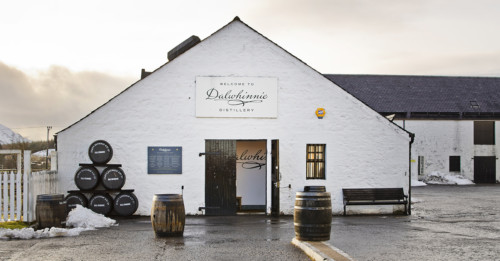Trying to navigate the world of Scotch can make you feel like you’re treading through centuries of history like some kind of uppity teenager walking into a haunted castle. But Scotch doesn’t have to be so intimidating. Beyond understanding your basic Scotch geography (basically knowing what kinds of flavor profiles come from the different Scotch-producing regions), there are just a few other questions to answer. Among them: single malt or blended?
Terminology in spirits can get complicated, especially within the whiskey category. For instance, whiskey is always spelled with an “e” unless it’s Scotch whisky, in which case that “e” is presumably left behind somewhere in the Scottish Highlands to think about what it’s done. And then of course there’s the fact that your Scotch might be labelled “Cask Aged,” “Sherry Finished,” or be part of some special series released by an independent bottler (who might buy a bulk of Scotch from the distiller at a non-traditional bottling age, let’s say, 17 years, and release it under a special name). Confusion is inevitable. But it’s worth it.
So, to clarify at least one aspect of Scotch: a blended whisky is actually a combination of a barrel-aged malt whisky (as in all barley) and some quantity of grain whisky (a whisky made with barley as well as other grains). The person who does the combining has a super important job—making sure a branded blended Scotch whisky tastes consistent from year to year—which is probably why he or she is called the Master Blender. Given the ability to produce consistent bottlings, and use slightly cheaper grain whisky as a filler, blended Scotch whisky is unsurprisingly the most common Scotch on the market.
On the other hand, single malt whisky is simply the product of one distillery. No, it’s not made from one particular barley harvest, or in one barrel, or by one old, wise Scottish guy. Single malt Scotch whisky is simply a “malt whisky” (again, as in “all barley”) that’s the product of a single distillery. Let’s say you get a bottle of Glenmorangie’s Single Malt 12-Year (Sherry cask finished, ahem). Let’s say you absolutely love it. That means any and all thank you letters should be sent to the Glenmorangie distillery. Same goes if you hate it—all hate mail should be sent to the Master Blender at Glenmorangie, who’s responsible for making it (though don’t really send mail, any kind of mail, at all). The same holds true for the less common single grain Scotch whisky, which is also the product of one distillery, just made with barley and other grains.
As for the all-important question, what’s the difference in taste? Actually, that depends on several other really important variables. For one, where the Scotch was made—as different Scotch-producing regions tend to produce different flavor profiles. There’s the question of how it was aged—both how long and in what (many Scotches are aged in used Bourbon barrels, but was it finished, or briefly aged, in any special wine or spirit casks?). And then there’s the question of how the brand is “supposed” to taste historically; the Master Blender will blend barrels to make sure a single malt or blended whisky tastes true to form.
Of course, since nothing can be too simple in Scotch, there are also blended malt Scotch whiskies, which blend single malts from multiple distilleries, and blended grain Scotch whiskies, which blend single grain whiskies from multiple distilleries. But again, the most common Scotch whisky on the market is your basic blended, which is whisky made from single malt and grain whisky sourced from different distilleries. Single malt, meanwhile, is often more prized, but not necessarily of higher quality. Single barrel whiskies (as in whisky made from one particular barrel) exist, with more inconsistencies due to the idiosyncrasies from barrel to barrel. Balvenie recently replaced their 15-Year single barrel American oak (bourbon cask) with a single barrel Sherry cask. But single barrel generally is more common in Bourbon, and usually far less expensive.
Confusing, yes. But at least we have one thing clear—we know that blended whiskies, however long they’re aged or finished, always combine single malt and grain whiskies. And we know that single malt whiskies are always the product of one distillery. And we know that we could probably use a tumbler of either one right about now…
Header image via Brendan Howard / Shutterstock.com
